My Favorite Customized Leica Cameras
Most standard issue Leica cameras are such beautifulfunctional objects in their own right I’ve often wondered why anyone wouldbother to guild the lily by creatingcustomized versions. However the human tendency to exalt and glorify what isalready magnificent has resulted in some truly extraordinary mechanical creationsincluding customized Rolls-Royces, Harley-Davidsons, Colt pistols, and of courseLeica cameras.
Regrettably it’s not possible to determine the identity of very first factory customized Leica because back in the day E. Leitz Wetzlar would fulfill virtually any custom order they could so long as it was placed through an official Leica dealer and the customer was willing to pay the extra cost. However, starting in 1929 the Wizards of Wetzlar did create the Leica Luxus, perhaps the most exquisite and coveted custom Leica of all time. Basically it’s a gold plated Leica I (model A) with a gold finished 50mm f/3.5 Elmar collapsible lens, and a lizard skin covering, that was code named LELUX. According to Leica Wiki only 15 of these jewels were made, ending in serial number 34817, and the few examples sold at auction have fetched stratospheric prices.
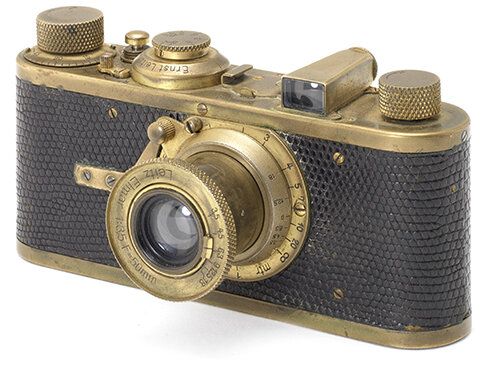
There was also a run of 4 (count ‘em) Leica Luxus II camerasbased on the first coupled rangefinder Leica, the model II (aka the Leica D) of1932. They were likewise finished in gold, fitted with gold plated screw-mount50mm f/3.5 Elmar lenses, and covered in lizard skin. The only example ever toappear at auction in 2013 came with an original crocodile case and sold for a“disappointing” $620,000, about 30% less than the pre-auction estimates. I onceheld a Leica Luxus I in my (nervously shaking) hands and can affirm that it’sabsolutely gorgeous but alas, that’s as close I’ll ever get to actually owningone.
One cool custom Leica I actually stand a pretty good chance of acquiring is the Leica X (Typ 113) “Edition Moncler” clad in patriotic red, white and blue stripes that accentuate the camera’s classic, slim rounded-ends form. Anyway, this digital Italian fashion label inspired beauty has a 16.2MP APS-C-format CMOS sensor that delivers extremely high image quality even at elevated ISOs, and it’s fitted with a superb Leica Summilux 23mm f/1.7 lens that provides 35mm-equivalent coverage that’s perfect for street stalking. True, it’s a little tough to be unobtrusive with this eye-popping color scheme, but your intended subjects are more likely to smile than snarl when they catch you taking their pictures. The “Edition Moncler” is readily available used at Leica dealers and auction sites.
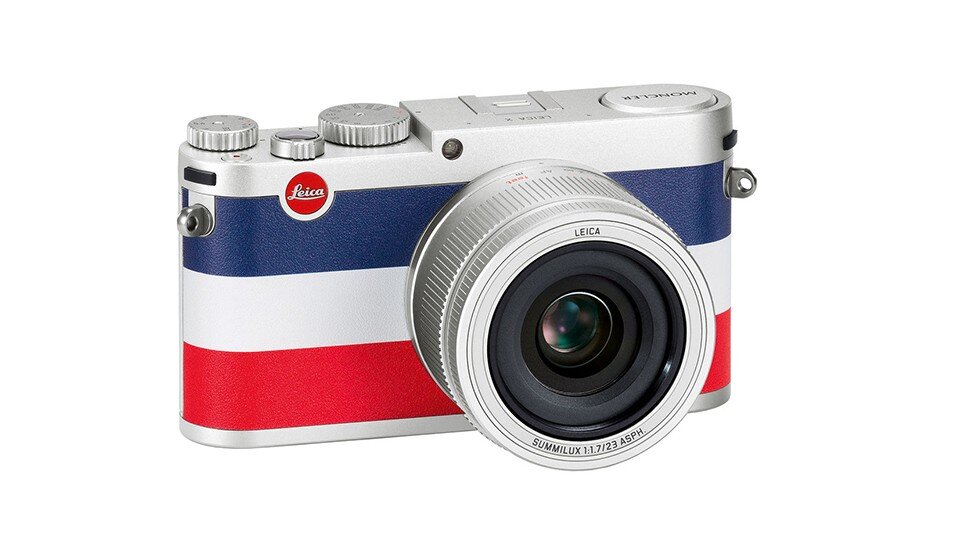
Some may consider it a little over the top but I’m also a big fan of the Leica M (Typ 262) in Red Anodized finish for the same reason—its eye-catching color emphasizes and italicizes its classic Leica form factor. Released in 2017 as a limited edition of 100 units, complete with matching red finished Summicron-M50mm f/2 ASPH. lens that was initially released in 2016, its top plate and baseplate are machined froma solid billet of aluminum and then anodized in brilliant red. Its impressivebasic feature array includes: a full-frame 24MP CMOS sensor mated to a Maestroimage processor, stills-only capture at up to 3 fps with sensitivities up toISO 6400, and a redesigned quieter shutter cocking mechanism. It’s topped offwith Leica’s renowned multi-frame range/viewfinder, with 0.68x magnification,split and superimposed manual focusing, automatic parallax correction, andautomatic field frame indexing of the attached lens. Its h-res 3.0-inch921.6k-dot LCD monitor is protected with scratch-resistant Corning GorillaGlass cover. No longer available brand new it’s challenging to find a usedexample for obvious reasons.
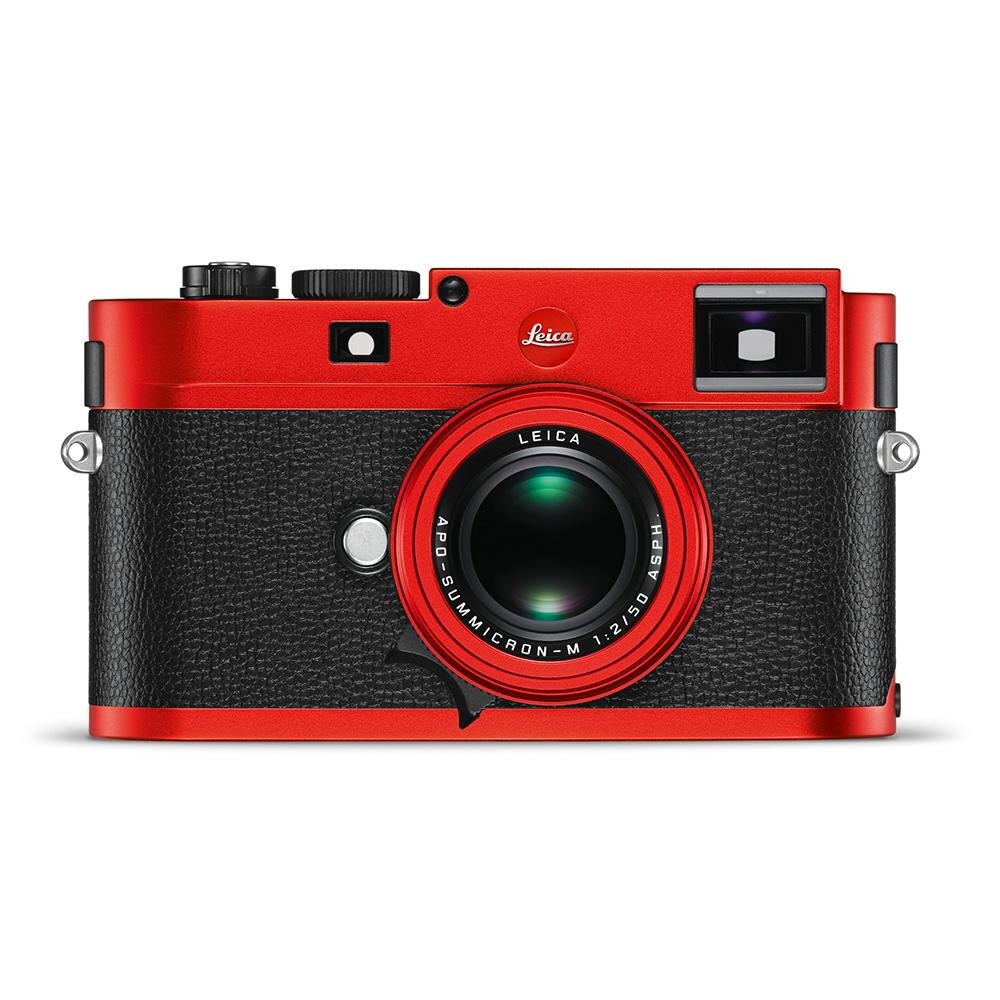
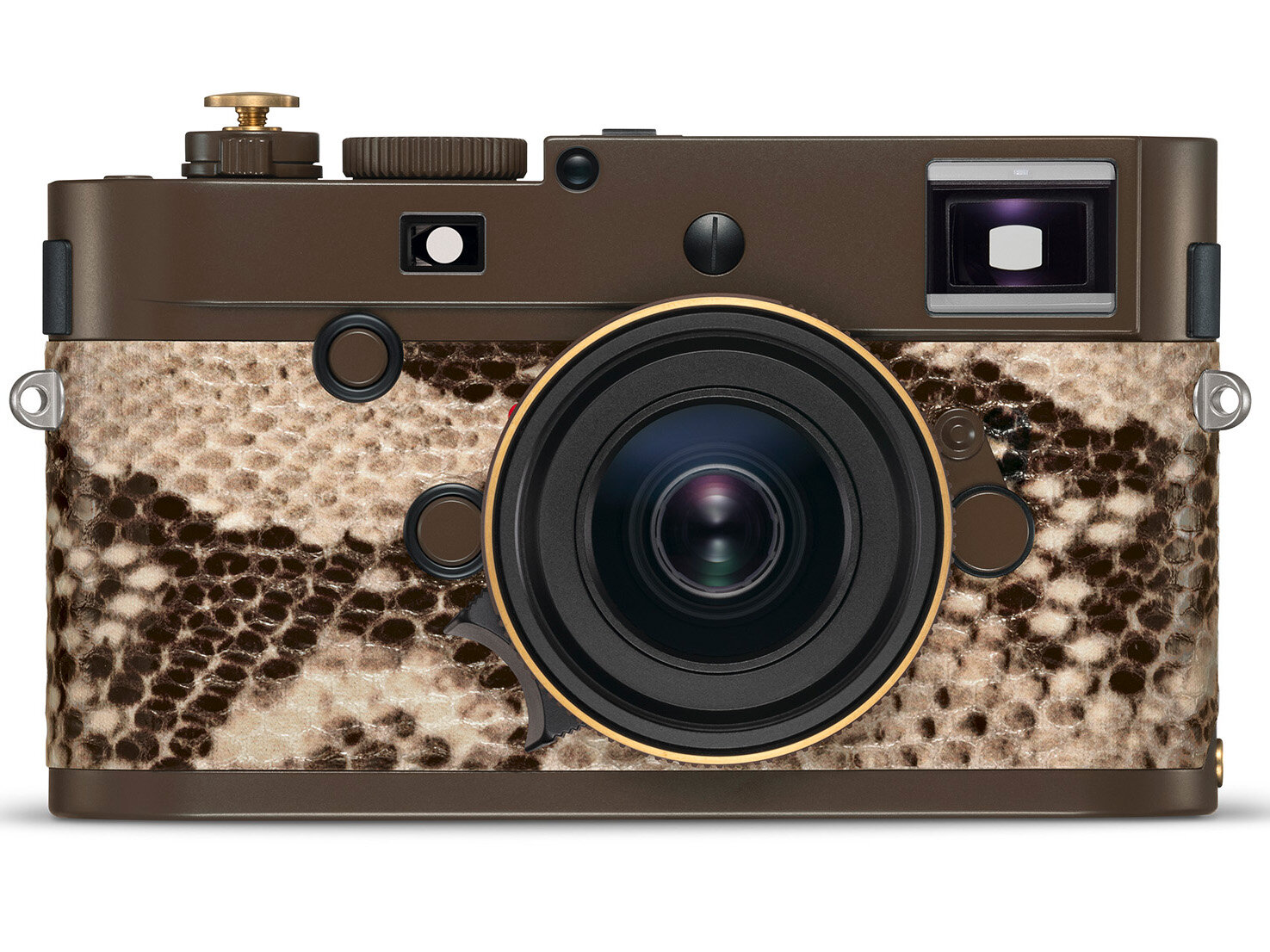
While I can’t claim to be an avid fan of rock icon and style influencer Lenny Kravitz I have boundless admiration for his limited edition Leica M Monochrom “Drifter” (Typ 246) clad in (of all things) a vegan “synthetic python” snakeskin covering with matching strap! Complemented by sepia brown painted surfaces with untreated brass accents the look is “luxuriously retro” and it’s designed to “wear in” and look better with age. The “Drifter” debuted in May 2019 and it’s my favorite digital custom Leica to date.
The M Moniohrom “Drifter” kit included 2 lenses, aSummicron-M ASPH., and an APO-Summicron 75mm f/2 ASPH. (the 28mm is customizedwith a special built-in extendable lens hood that matches the one on the 75mm),and a high-style Drifter Traveler bag, 2 pouches, and cases for both lenses.Only 125 kits were produced, they fetched from $20,500 to $23,950 apiecedepending on accouterments. To the best of my knowledge they were all snappedup by well-heeled user collectors with lots more money than I.
Naturally I’ve saved the best for last, namely mytwo favorite one-off custom analog Leicas. Both were created at the behest of Leicaenthusiast, photojournalist, and art photographer extraordinaire John Bottewith the heartfelt cooperation and support of Leica, and the incomparable talentsand services of dedicated master engravers. A Leica shooter since 1974, hebriefly used Leicaflex SL2 with a 50mmf/2 Summicron-R lens, but the camera thatreally changed the course of his photography was a gift from his grandfather, aLeica M2 with a 50mm f/2 collapsible Summicron.

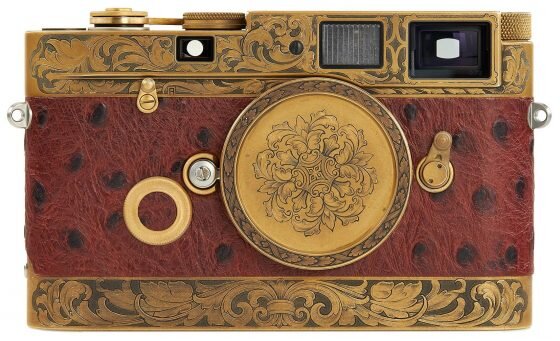
John Botte grew up in a small town south of Salerno on Italy’s Amafi Coast. A first generation Italian-American and a naturalized U.S. Citizen, he joined the New York City Police Department at the age of 19, rose through the ranks to become a NYPD detective, and retired in 2003. As a result of his police connections he had special access to Ground Zero during and immediately after 9/11 and was himself pulled from the rubble when the second World Trade Center tower collapsed. He is best known for his incisive and unforgettable images documenting the horrific scenes following the attacks, and for his best-selling book Aftermath (2006, Harper Collins), widely acclaimed as the most definitive photo book on this pivotal moment in history.
For the record, the camera Botte actually had withhim on 9/11 was a Leica M4 and the lenses he used to document the tragedy andits aftermath include some vintage classics—an uncoated 73mm f/1.9 Hektor and50mm f/2 Summar, and a coated 50mm f/2 Summitar and collapsible 50mm f/2 Summicron.He shot some of these images using an infrared filter to cut through the finedust that enveloped the area, often limiting visibility to an arm’s lengthdistance.
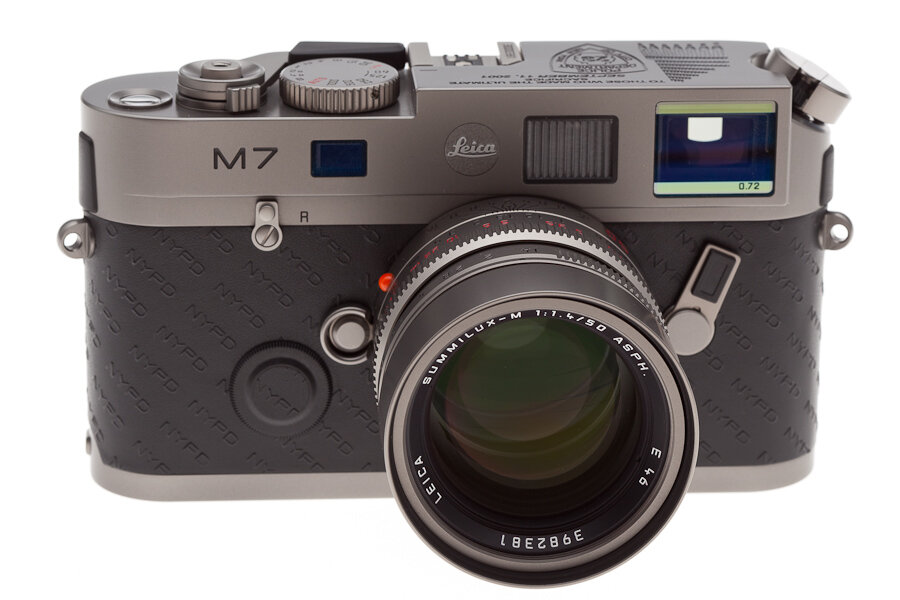
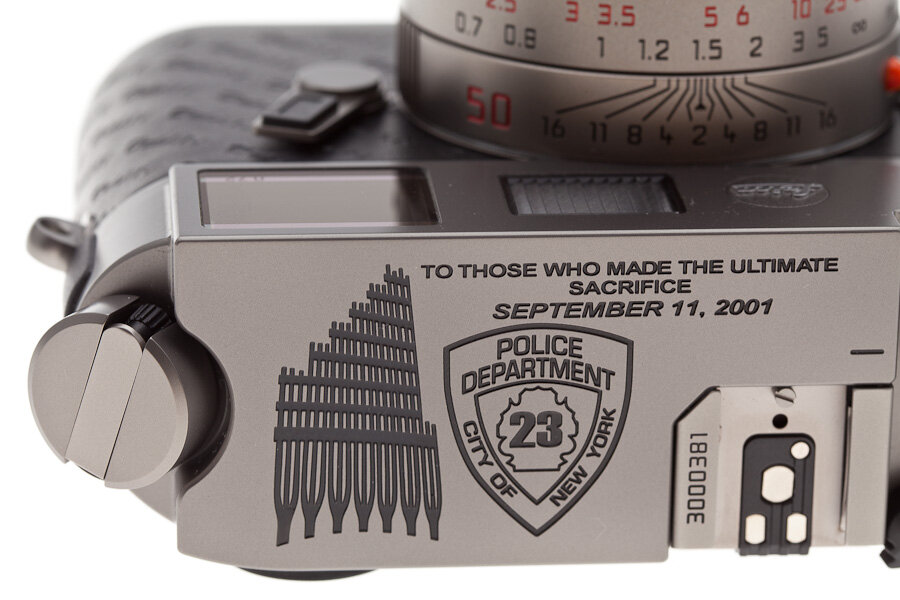
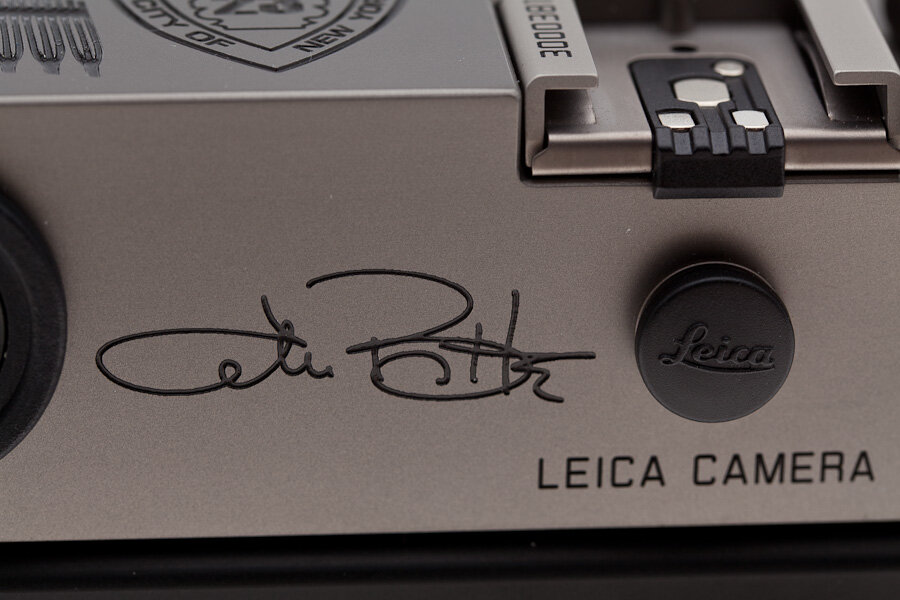
The Story of the 9/11 Memorial 50 Jahre Titanium M7in John Botte’s own words
“On an overcastweekday afternoon in 2005, I was feeling under the weather and was edgy,restless and bored. I went to my computer to check my email, and amagazine on my desk had the Leica Titanium M7 50 Jahre Edition on thecover.
It wasthen, I came up with the idea of designing a camera to accompany my 5thAnniversary 9/11 Tribute book that was due for release in September of2006.
Once Iwas finished with the computer rendition of the design I came up with, I sentit to Leica with a pitch email and the image of the M7.
About 3weeks after I sent the graphic rendition and email to Leica, I received aparcel via UPS containing the exact camera I designed. I was absolutelybeside myself that a thought I had 3 weeks earlier, resulted in a tangiblereality sitting in my hand. In 2011, on the 10th Anniversary of 9/11, Iplaced the camera up for auction, and it realized $118,000, all of which Idonated to a private charity. By the way the auction house helped out by reducingtheir fee to 15% instead of the usual 25%. And that’s how the 9/11 Memorial M7came to be.”
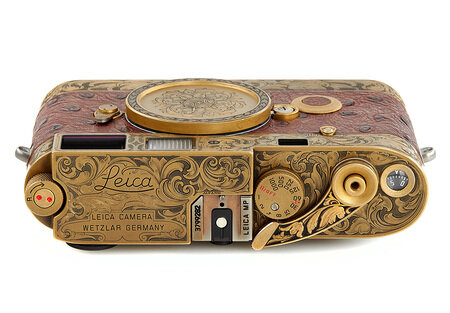
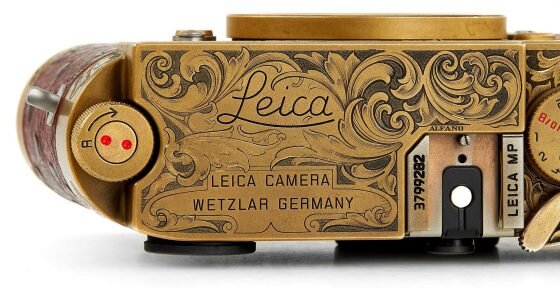
The storybehind the superlative one-off John Botte Engraved Leica MP
When Iasked John Botte what gave him the idea of designing a splendiferously engravedLeica MP masterpiece, his laconic and ironic reply was, “Boredom.” However whatinspired it was seeing an awesome 45-caliber pistol that had been engraved bySam Alfano, one of the premier master engravers in the world. When he reachedout to Alfano it turned out that Sam was a fellow Leica enthusiast who had been“dying to do a Leica,” but there was a catch. “I can’t just take an existingLeica, strip the pant off, and start chiseling away—I need the raw brasscomponents as they come off the CNC machine that carves them out of solidbillets of brass, and they must be virgin brass completely free of chemicalsolvents.”
So John Botte contacted Stefan Daniel and Bjorn Dietzler at Leica, told them what he was up to and what he needed. At the same time he sent Sam Alfano some scroll ideas but gave him complete artistic license to “do whatever you want” to create the camera. One week later, an astonished Sam Alfano received a box at his workshop in L.A. containing 2 brass Leica MP top plates and 2 bottom plates. It took him 2 years of meticulous handwork using chisels and magnifying glasses to embody John Botte’s vision, during which time Botte says, ” I just left him alone, and never even asked how the project was coming along.” To say that the end result was well worth the wait is an understatement—it’s simply breathtaking!
TheJohn Botte Engraved Leica MP did go up at auction and received a bid of 81,000Euros, but didn’t meet the reserve. Because it was a gun that inspired his MP Botteplans to offer it up again, this time including a print of his superb, compelling,and seldom seen image of confiscated guns used in crimes that he was able toshoot at the Police Armory because of his Category 1 clearance. He plans todonate half the proceeds to charity.

